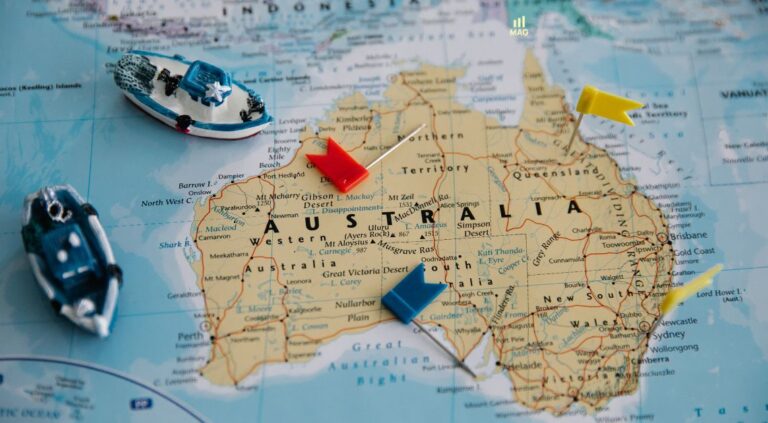
Are you planning to sell on Amazon in Australia? If so, the latest news from the Australian Financial Review that Amazon is becoming a major player in the Australian grocery market could be another factor to convince you.
You’re already a successful seller on Amazon US, and expanding to Australia seems like a natural next step. However, uncertainty about the market and the potential challenges can hold you back.
The opportunity is ripe with Amazon’s growing dominance in the Australian market. To make an informed decision, it’s crucial to understand the nuances of the Australian market, including local regulations, consumer preferences, and logistics.
By carefully considering these factors, you can position your business for success in this thriving e-commerce landscape.
Amazon's Growing Footprint in Australia
Amazon’s grocery sales in Australia are expected to reach $1.3 billion this year, growing rapidly and challenging major supermarkets like Woolworths and Coles.
Key Highlights from Amazon’s Growth in Australia:
Rising Presence
Amazon’s grocery sales in Australia are expected to reach $1.3 billion this year, growing rapidly and challenging major supermarkets like Woolworths and Coles.
Competitive Pricing & Fast Delivery
Amazon offers competitive prices on basic items and is investing in rapid delivery, including two-hour windows, to attract more shoppers.
Major Investments
Amazon has invested $11 billion in Australia since 2011, with plans to expand further, offering same-day delivery across major cities by 2026.
Emerging Market
With only 7% of Australians shopping for groceries online, Amazon sees significant growth potential in this sector.
Growing Customer Base
More Australians are turning to Amazon for groceries, with repeat purchases of essentials like toilet paper and cat litter.
Market Competition
Amazon’s expansion is pushing Woolworths and Coles to adapt, and the Australian Competition and Consumer Commission (ACCC) is closely monitoring this growing competition.
Why Sell on Amazon in Australia?
Amazon encourages sellers to tap into the booming Australian e-commerce market. With a sizable population and a rising number of online shoppers, Australia offers a significant opportunity to reach international customers without the need for language or cultural barriers.
Here are other facts and figures worth knowing before you sell on Amazon in Australia.
Australian E-commerce revenue is expected to hit US$37.10 billion in 2024.
By 2029, the number of e-commerce users is projected to reach 23.1 million.
Australians spent $63.6 billion online in 2023.
In 2023, 80% of Australian households made online purchases, with over 9.5 million households receiving deliveries.
Almost 14% of Australian households shopped online weekly in 2023, highlighting the increasing popularity of e-commerce.
E-commerce sales in Australia reached a record high of AU$56.07 billion in 2024, with fashion leading the market at AU$11.64 billion.
Millennial shoppers continue to be top spenders online, with total expenditures reaching $22.1 billion.
Electronics sales reached AU$9.66 billion, food retail brought in AU$6.50 billion, DIY products totaled AU$3.02 billion, and beverages with.
How to Sell on Amazon in Australia: Guide to Global Selling
Selling on Amazon in Australia is part of the global selling. Here is a video you can watch to know more about it.
Amazon operates in over 21 marketplaces worldwide, providing sellers with vast opportunities to expand their reach. With tools that simplify the process, sellers can easily determine where to send their products.
However, despite these conveniences, many sellers hesitate to sell globally on Amazon. Why? The primary reasons include varying regulations and the complexities of entering new markets.
Setting Up Global Selling on Amazon
To start selling globally, navigate to the Inventory Tab and select Sell Globally. This feature simplifies the setup for different marketplaces. Amazon also offers a Marketplace Product Guidance Tool under the Growth Tab, which provides insights into global demand for your products.
For example, in the Japanese marketplace, this tool offers data on:
- Best Seller Rank
- Best Sales Period
- Net Shipped Units
- Offer Price
- Fulfillment Channel
- Rationale for Demand Forecasts
These insights are based on a 90-day forecast, helping sellers understand sales potential. However, demand forecasts can vary widely, highlighting the importance of careful analysis.
Analyzing Market Demand with Amazon's Tools
Amazon’s forecasting tools help predict demand, but they also highlight potential regulatory restrictions. For instance:
- Japan – Requires a local service provider to facilitate product entry.
- Spain – Has different compliance requirements that sellers must navigate.
Each marketplace has unique rules, so sellers need to ensure their products meet local standards before launching.
Navigating Marketplace Restrictions
The key to successful global expansion lies in two critical factors:
- Market Demand – Does your product have a viable market?
- Regulatory Compliance – Are there any restrictions or additional requirements?
Amazon simplifies this process by offering guidance within the Sell Globally Tab, where you can connect international marketplaces to your U.S. account.
Store Synchronization and Listing Setup
Amazon’s Store Synchronization feature allows you to link your U.S. listings to international marketplaces. This tool enables:
- Price synchronization
- FBA listings setup
- Remote fulfillment for U.S. and North America
While Amazon automates much of the process, sellers must still localize product listings to the native language of each marketplace to improve customer experience.
Considerations for Expanding Globally
Not every product is suited for global expansion. Before diving in:
- Assess market demand in specific regions.
- Review regulatory requirements.
- Start with one or two high-demand marketplaces to test the waters.
Preparing to Sell on Amazon Australia
Before launching your business on Amazon Australia, it’s essential to have a clear plan and understand the marketplace’s unique requirements.
Understand Product Eligibility
Ensure your products comply with Australian regulations and Amazon’s policies:
- Check if your product category is open or restricted.
- Verify distribution rights and local compliance requirements, as Australian safety standards may differ from those in other regions.
- Review category-specific restrictions and Amazon’s content policies.
For legal or compliance questions, consult Amazon’s external solution providers.
Research Market Trends
Familiarize yourself with best-selling products on amazon.com.au. This insight can help you understand customer preferences and identify high-demand items when planning to expand to Australia.
Expanding into the Australian market comes with challenges such as navigating strict product eligibility requirements, understanding local safety and compliance standards, and ensuring distribution rights. Additionally, sellers must adapt to category-specific restrictions and align with Amazon’s policies.
These hurdles can be daunting, but an Amazon agency or experienced professionals can simplify the process by providing expert guidance on regulatory compliance, optimizing listings for the local audience, and identifying profitable product opportunities through market research. This support ensures a smoother expansion and maximizes your chances of success in Australia.






